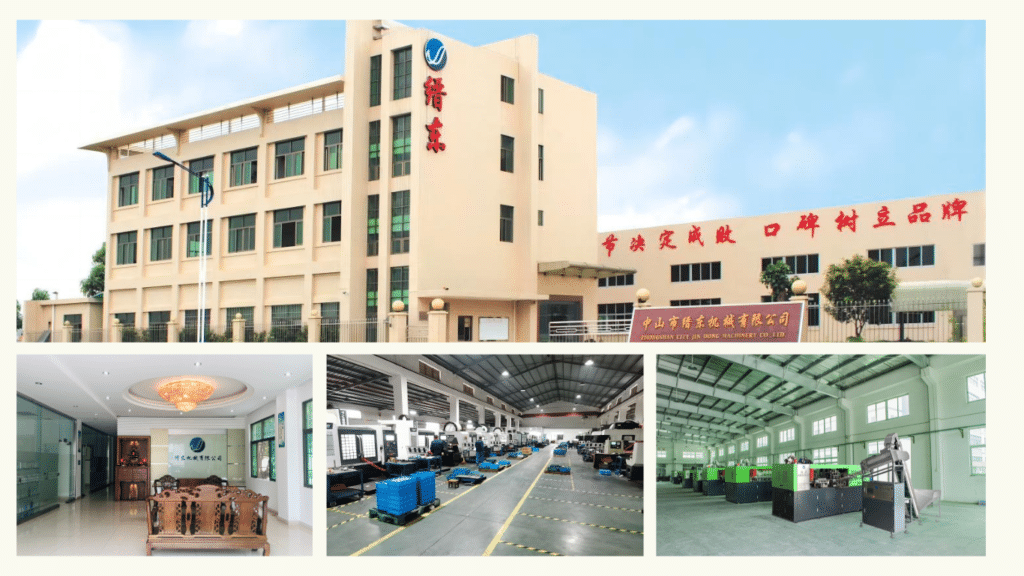Introduction: PET plastic bottles are widely used in various industries such as food and beverage, pharmaceuticals, and cosmetics. To meet the demand for these bottles, it is crucial to have the right equipment for PET plastic bottle production. In this article, we will delve into the equipment required for manufacturing PET bottles, providing detailed insights into their functionality and significance.
Understanding PET Plastic Bottle Production Process: The production of PET plastic bottles entails a multi-stage process, including PET resin preparation, injection molding of preforms, and blow molding of bottles. Familiarizing oneself with this process is essential for identifying the equipment needed at each stage.

Equipment Required for PET Plastic Bottle Production:
- Injection Molding Machine: Injection molding machines are essential for producing PET preforms, which are later transformed into bottles. These machines melt the PET resin and inject it into a mold cavity, creating the desired preform shape. Injection molding machines are available in various sizes and configurations to accommodate diverse production needs.
- Blow Molding Machine: Blow molding machines play a vital role in transforming PET preforms into final bottles. By utilizing high-pressure air, these machines inflate the preforms inside a mold, resulting in the desired bottle shape. Different types of blow molding machines, such as extrusion blow molding and stretch blow molding, cater to various bottle designs and production volumes.
- Molds and Tooling: Molds are indispensable components in PET bottle production as they define the shape and size of the preforms and bottles. Opting for high-quality molds ensures consistent production and minimizes defects. Precision-manufactured tooling, including mold cores and cavities, is crucial for achieving accurate bottle dimensions.
- Auxiliary Equipment: Several auxiliary equipment pieces contribute to efficient PET bottle production. These include chiller units for mold cooling, air compressors for providing high-pressure air during blow molding, and conveyors for seamless transportation of preforms and bottles along the production line. Thoughtful selection and integration of auxiliary equipment facilitate smooth operations and optimized production.
- Bottle Filling and Capping Machines: Depending on the specific requirements of the product being packaged, integrating bottle filling and capping processes may be necessary. These machines automate the filling and sealing of bottles, ensuring precise and efficient packaging. The choice of filling and capping machines should align with the product and packaging specifications.
- Quality Control and Inspection Systems: Quality control plays a critical role in PET bottle production. Employing vision inspection systems and other quality control equipment helps detect defects such as improper bottle dimensions, color inconsistencies, or foreign particles. Reliable quality control systems uphold product integrity and meet customer expectations.
Factors to Consider in Choosing Equipment: When selecting equipment for PET plastic bottle production, several factors come into play. These include production capacity requirements, budgetary constraints, technical expertise availability, and compatibility with bottle designs and customization options. Thorough evaluation of these factors ensures the chosen equipment aligns with specific production needs and business objectives.
Conclusion: Manufacturing PET plastic bottles necessitates a range of specialized equipment to achieve optimal results. By comprehending the functionality and significance of injection molding machines, blow molding machines, molds, auxiliary equipment, filling and capping machines, and quality control systems, manufacturers can make well-informed decisions when establishing their PET bottle production lines.
Frequently Asked Questions (FAQs):
Q: What are the main stages involved in PET plastic bottle production? A: The main stages of PET plastic bottle production include PET resin preparation, injection molding of preforms, and blow molding of bottles.
Q: How do injection molding machines contribute to PET bottle manufacturing? A: Injection molding machines melt PET resin and inject it into mold cavities to create preforms, which are later transformed into bottles.
Q: What role do molds play in the blow molding process? A: Molds define the shape and size of the preforms and bottles in the blow molding process, ensuring accurate dimensions and consistent production.
Q: Are there specific quality control systems for PET bottle production? A: Yes, quality control systems, such as vision inspection systems, are employed to detect defects and ensure adherence to product specifications.
Q: Where can I find more information about your company and its equipment? A: For more information about our company and the wide range of equipment we offer for PET plastic bottle production, please visit our website at www.ibottler.com.
Visit our website at www.ibottler.com to explore more about our company and the range of equipment we offer for PET plastic bottle production.


